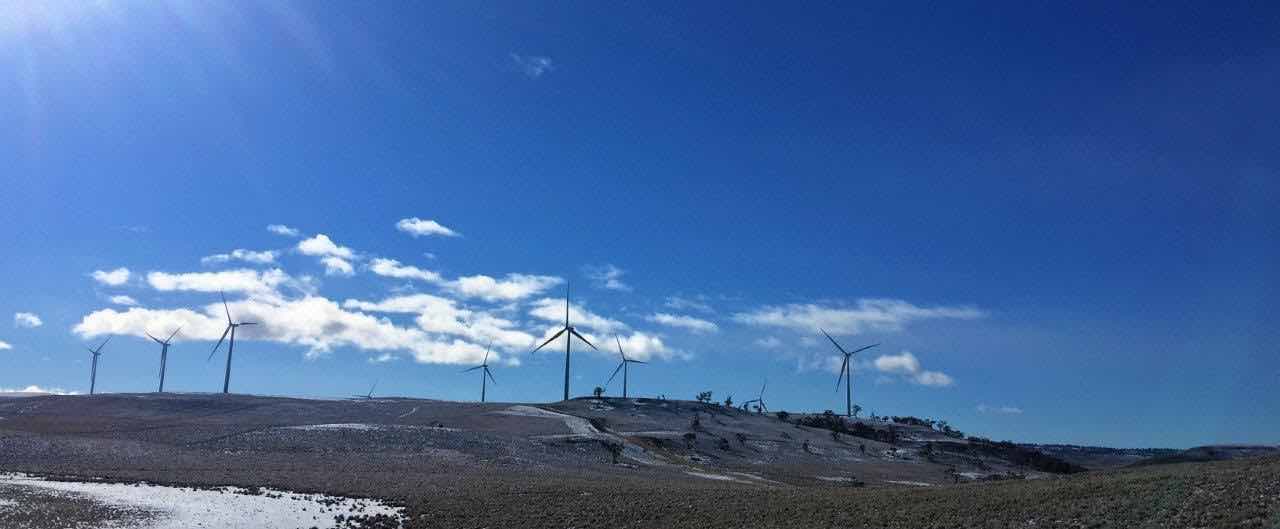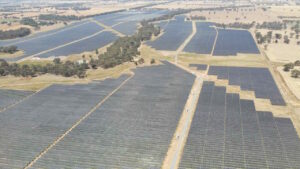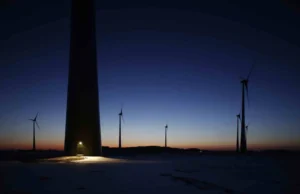New South Wales has announced plans to create its first “renewable energy zone”, seeking to attract 3,000MW of investment in the state’s central west as it accelerates its efforts to attract cheap wind and solar to replace its ageing coal-fired power stations.
The initiative was one of a number of initiatives unveiled in a new electricity strategy by NSW, which is the most heavily coal-dependent state in the country, sourcing 80 per cent of its local generation coming from its black coal generators, four of which will retire over the next 15 years.
It now realises that coal is not the future. Not only are firm renewables cheaper, the coal fired generators are becoming increasingly unreliable, prompting the state government to develop a new, higher energy security standard to back-fill in case of more generator trips.
“Firmed renewables are now the most cost-competitive form of new generation and cost less than the current wholesale electricity price,” state energy minister Matt Kean said while unveiling the NSW Electricity Strategy on the morning of the meeting of COAG state and federal energy ministers in Perth on Friday. (See second table below).
 The first of three renewable energy zones (REZ) – the first in Australia – will be located in a region bordered by Tamworth to the east, Nyngan to the west and Orange to the south.
The first of three renewable energy zones (REZ) – the first in Australia – will be located in a region bordered by Tamworth to the east, Nyngan to the west and Orange to the south.
It will please the Australian Energy Market Operator, which has been promoting them as a key to its Integrated System Plan.
NSW says this first REZ will provide a model for at least two others it is planning for the state – one in the south west and the other in New England, no doubt to the delight of former Nationals leader Barnaby Joyce and his successor Michael McCormack, whose electorates they will cover.
Wind and solar developers are waiting to see how these REZs play out, as it may reduce development options in some areas, while herding them into others.
The NSW government said the REZs “do not stop the development of energy projects in other parts of the State”, such as the Hunter Valley and South East and Tablelands, but it also flagged that wind and solar developers may be asked to contribute to the cost of transmission under new regulations to be developed by the state government.
It was one of a number of initiatives announced in the strategy that will see increasing government intervention in the markets.
 The others are a more ambitious energy savings target that will support technologies that reduce the consumption of electricity or gas from the wholesale market, and a demand reduction scheme that will support technologies like batteries that can shift demand away from peak periods.
The others are a more ambitious energy savings target that will support technologies that reduce the consumption of electricity or gas from the wholesale market, and a demand reduction scheme that will support technologies like batteries that can shift demand away from peak periods.
NSW will also set its own energy security target which it says will give the market certainty about how much new electricity is needed to deliver a reliable energy system over the medium to long-term, and will serve as an additional framework over national reliability measures.
“The Target will be set at an amount that is enough capacity for NSW to handle heatwave conditions, plus an extra buffer of the two largest generating units in the State in case of unplanned outages,” the document says. The Target will serve as an additional framework that complements the existing national reliability measures.
Kean says if its target is not met, the NSW Government will intervene, either by using government funds to acceleratie key projects that will deliver more resilience to the system, “restraining electricity companies from delaying key projects”, and investing in more transmission.
It identified five key projects that needed to go ahead to ensure system security in the wake of the planned closure of the Liddell coal generator in 2023.
These include a 250MW gas peaking plant proposed by AGL for Newcastle, a 320MW gas peaking plant proposed by EnergyAustralia at Tallawarra, four large-scale 50MW batteries (proposed by AGL with Maoneng Group), the 50MW Darlington Point Battery, and various projects funded by the Emerging Energy program.
 Kean listed five options available to NSW to “enhance firm supply or reduce peak demand”, if required, to meet the Energy Security Target:
Kean listed five options available to NSW to “enhance firm supply or reduce peak demand”, if required, to meet the Energy Security Target:
These included fast-tracking the HumeLink interconnector to unlock up to 1200MW of existing capacity, of which 500MW would be available during periods of peak demand, and 2000MW of new reliable capacity following the completion of Snowy 2.0 pumped hydro scheme.
- It could also accelerate a further upgrade of the Queensland-NSW Transmission Interconnector Upgrade (378MW), and use NSW Government’s electricity contracts to stimulate private sector investment in firm generation. It also expand the “emerging energy program” and the energy efficiency scheme.
“As our existing power generators approach the end of their lives, we need to ensure low-cost alternatives are coming online,” Kean said in his statement.
“By focusing on reliability, we can ensure that we can get the benefits of renewables without the reliability problems we have seen in other states.
“While there will always be extreme events which impact the grid’s reliability, our Electricity Security Target will mean that changes to the State’s energy mix do not come at the expense of our system’s reliability.”
Kean said the scheme would deliver a $40 reduction in bills, although it wasn’t clear what time frame he was talking about, or the significance given that the average bill is close to $2,000. But ministers are obliged to promise bill reductions.
Most likely it will come from efficiency savings, and the increased and lengthened target was welcomed by the Energy Savings Industry Association (ESIA) and the Energy Efficiency Council.
ESIA pesident Rod Woolley said the existing NSW energy saving scheme is delivering an average annual reduction of total electricity consumption of at least four per cent. “The additional demand reduction initiatives will reduce pressure on summer peak demand times from 6-9pm when the system is under most stress and risk,” he said.
The EEC’s Luke Menzel backed the NSW government’s “balanced approach” in its plan.
“Energy efficiency to bring down bills. Firmed renewables to replace aging generators. New, smart devices and equipment to balance the system,” he said.
“Together, these elements add up to a credible plan to deliver an affordable, reliable and sustainable twenty-first century energy system, and it is a template that should be emulated around the country.”










